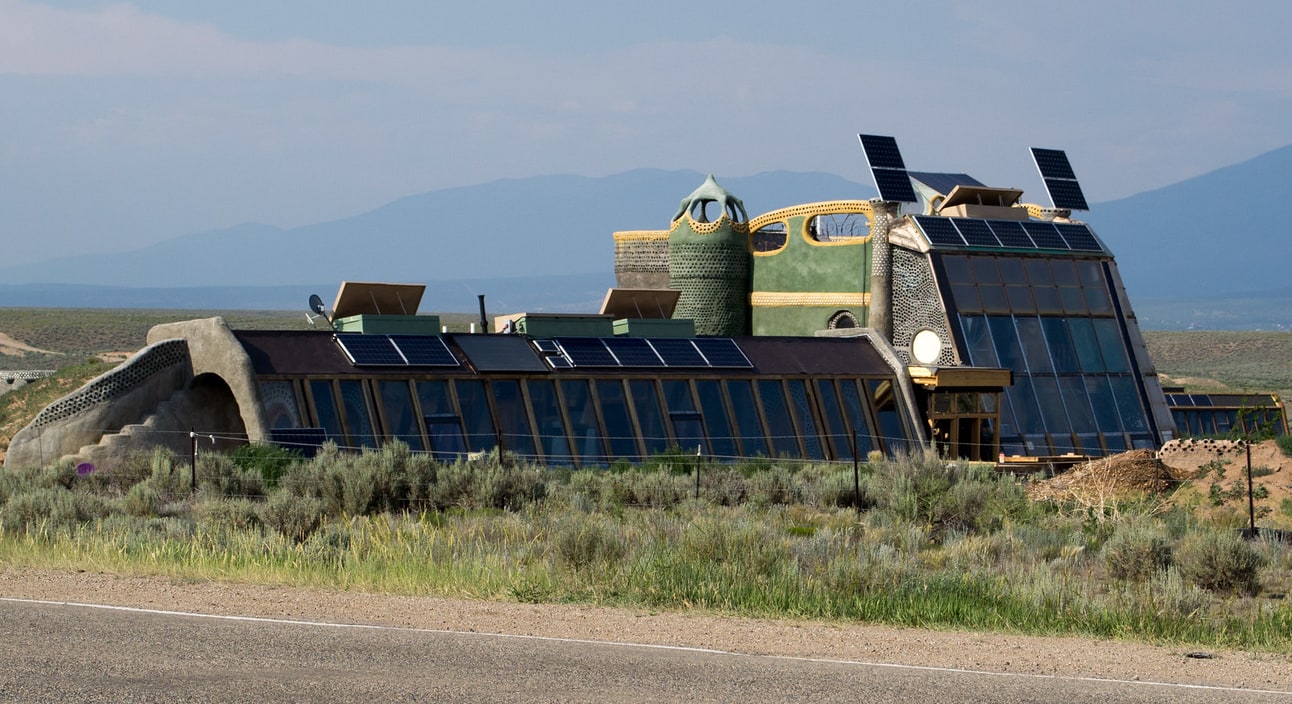
The ‘Earthship’ – or ‘Earthship Biotecture’ – is an architectural concept that arose in the 1970s, formulated by the architect Michael Reynolds. His aim, which underlies the concept, was to design and create a home that would do three things: first, it would encapsulate sustainable architecture by relying on local materials or recycled materials; second, the homes would depend on natural energy sources in order to be off-grid; and third, they would be designed in such a way that a person with no specialised construction skills could build their home.
The Features of an Earthship
Earthship Biotecture, named after the concept and founded by Reynolds, is a leading eco-construction and self-sufficient living company. It builds homes that are based on Reynolds’ vision. Its passive solar houses, made from natural and upcycled materials – such as earth-packed tires – can address basic human needs based on the company’s six design principles: thermal/solar heating and cooling, solar and wind electricity, self-contained sewage treatment, building with natural and recycled materials, water harvesting and long-term storage, and internal food production capability.
The company’s homes are intended to be ‘off-the-grid ready’, minimising their reliance on public utilities and fossil fuels. The COVID-19 pandemic has caused many people to rethink their lifestyles and this, along with the climate crisis, makes off-the-grid living seem like an appealing option. Off-the-grid living was already rising in popularity before the pandemic, but the pandemic has led many people to leave the city in favour of a more self-reliant way of life. Earthship Biotecture could be a way of helping people make this radical change. Reynolds has stated that people in Earthships:
don’t have to pay for heating and cooling. They don’t have to pay electric bills. They don’t have to pay for garbage pickup, a sewage bill, a water bill, and they are growing a lot of food. It has reinforced that if we’re observing this in a pandemic, then the future problems that we’re going to have on this planet [can be partially addressed with Earthships].
Building these dwellings is labour-intensive, although they can supposedly be built by a small team in a month.
Is Sustainable Housing Really That Expensive?
Many people believe that the biggest downside of sustainable housing is that it is costly. The problem, though, is that studies on housing standards usually rely on a cost-benefit analysis to assess the value of traditional housing versus sustainable housing, which ends up leading to the conclusion that the latter is unaffordable. Other research indicates that these analyses exclude some key financial benefits of sustainable housing that make this kind of living, overall, quite affordable.
For example, Australian residents who live in sustainable housing use 45% less electricity than the control households (and 73% less than the industry standard) and 22% less water (and 30% less than the industry standard). This, of course, translates into cheaper energy bills. Sustainable housing also entails lower mobility costs.
We also can’t ignore the added benefits of sustainable housing, such as the fact that they have a 40% less CO2 environmental impact from power use (and 63% less than the industry standard). Moreover, we shouldn’t ignore the massive, hidden costs of climate change. Other overlooked effects of sustainable housing include householders’ health and quality of life that improve due to factors such as improved thermal comfort.
Residents living in sustainable homes also report that, by saving money on bills, they can spend more money on gifts for their children, avoid personal debt, and take more holidays. This leads to reduced stress and better mental health.
While it may be tempting to think that Earthships must be extremely cheap since they are made from old tires compacted with dirt, this view is mistaken. Most reports underscore that they cost just as much to build as a conventional house (although, as the previous points highlight, the money-saving, environmental, and comfort benefits of an Earthship could make it far more valuable than a standard home).
Earthships aren’t perfect, but the principles on which they are based certainly provide inspiration for how to live sustainably and self-sufficiently.